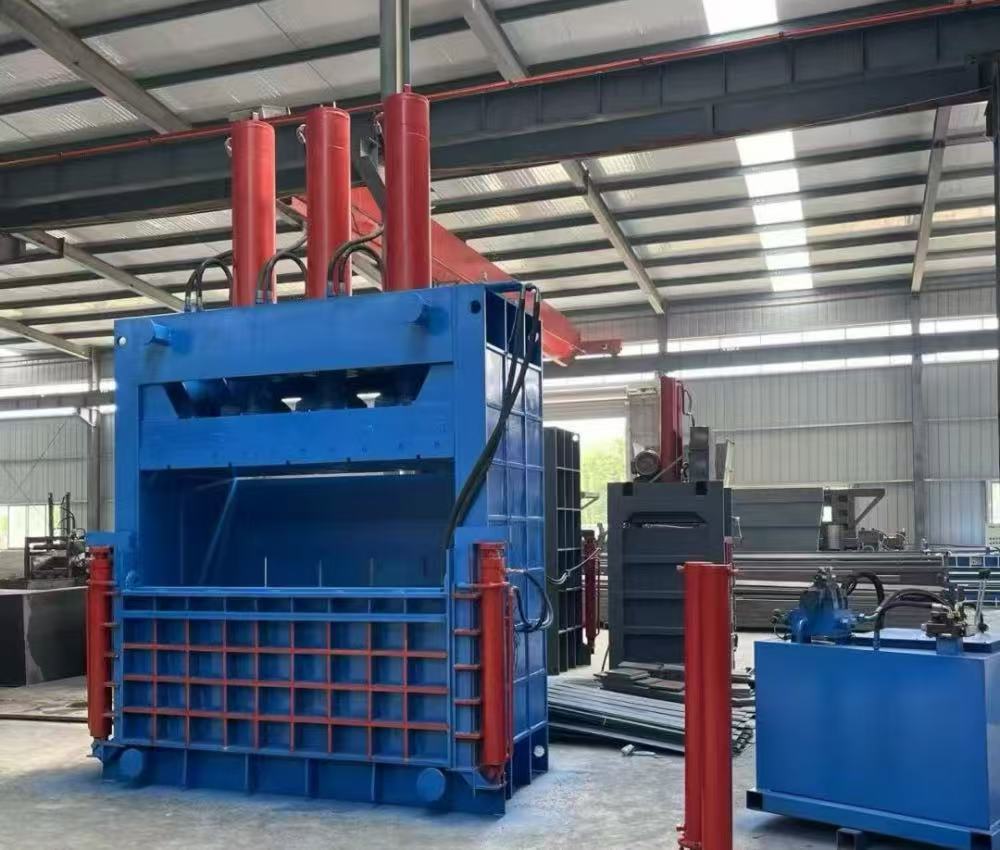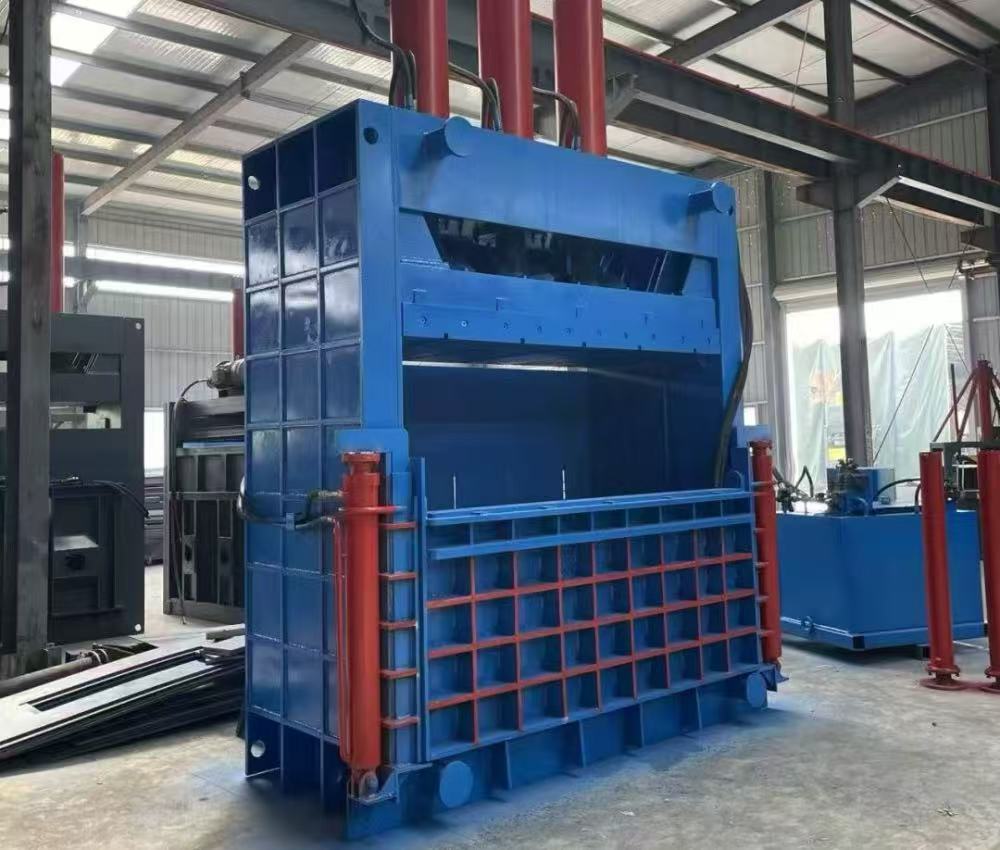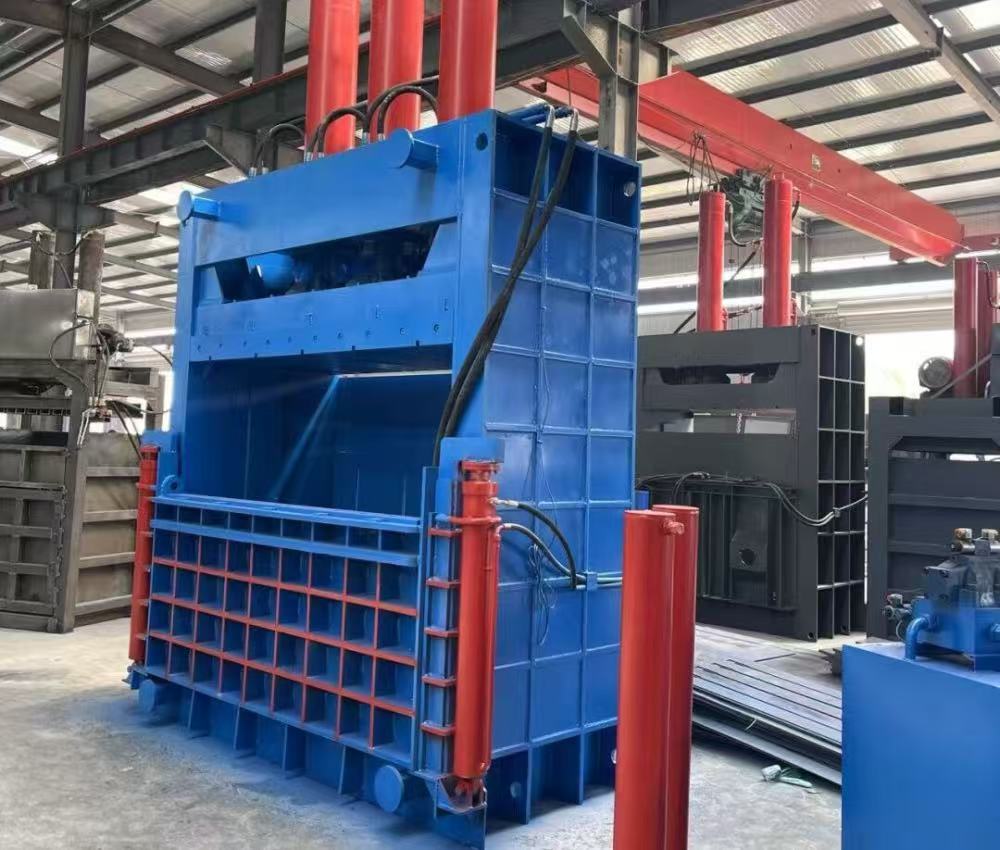What Is A Vertical Metal Baler

A Vertical Metal Baler is a specialized machine designed to compress and bundle scrap metal into dense, manageable bales. Unlike horizontal balers, which are typically larger and handle continuous, high-volume operations, vertical balers operate with an upright chamber. This design makes them compact, easier to install, and practical for small to medium-sized facilities that generate metal waste.
The working principle of a vertical metal baler is straightforward. Scrap metal such as aluminum cans, steel offcuts, or copper wires is loaded into the vertical chamber. A hydraulic press then applies powerful downward pressure to compress the material. Once compacted, the metal is tied with strong wires or strapping, forming a uniform bale that is easy to transport and store. These bales can be shipped directly to recycling facilities or smelting plants, reducing logistics costs and maximizing recycling efficiency.
Vertical metal balers are widely used in recycling centers, manufacturing plants, automotive workshops, and scrap yards. They are suitable for both ferrous and non-ferrous metals, making them a versatile solution for businesses looking to manage waste responsibly while improving operational efficiency.
Why Use A Vertical Metal Baler

Space-Saving Design
One of the key advantages of a vertical metal baler is its compact footprint. Many businesses, particularly workshops or small-scale recycling centers, operate in limited space. A vertical baler takes up less floor space compared to horizontal systems, making it the ideal choice for locations where every square meter counts.
Cost Efficiency
Vertical metal balers are generally less expensive than their horizontal counterparts, both in terms of initial purchase and long-term maintenance. They consume less energy and require fewer resources to operate, helping companies reduce operating costs while still meeting recycling goals.
Improved Waste Management
Without baling, scrap metal can quickly pile up, creating clutter and safety hazards. A vertical baler compresses this material into neat, stackable bales, keeping the workspace organized and reducing fire risks. The uniform size of the bales also simplifies storage and transport.
Contribution To Sustainability
Sustainability is a growing concern for industries worldwide. By using a vertical metal baler, companies can ensure that metal waste is properly processed and sent for recycling instead of ending up in landfills. Recycling metals helps conserve natural resources, reduce greenhouse gas emissions, and support a circular economy.
Versatility
Vertical metal balers can process a wide range of metals. From light aluminum cans to denser steel plates, these machines are designed to handle diverse materials. Some models even allow operators to switch between metal, cardboard, and plastic, adding further flexibility to waste management operations.
How To Use A Vertical Metal Baler

Step 1: Preparation
Before using the machine, it is important to ensure that the baler is placed on a stable surface and that all safety checks have been performed. Operators should wear appropriate personal protective equipment such as gloves, helmets, and safety glasses. The hydraulic system, power supply, and control panel must be inspected before operation.
Step 2: Loading The Chamber
The chamber door is opened, and scrap metal is loaded into the vertical chamber. Depending on the size of the baler, this may involve smaller loads of light aluminum or larger chunks of steel. It is important not to overload the chamber, as this can affect performance and cause wear on the hydraulic system.
Step 3: Compression
Once the chamber is filled, the operator closes the door securely. The machine is then activated, and the hydraulic press moves downward, compressing the scrap metal into a dense block. The pressure applied can be adjusted based on the type of metal being processed. Heavy-duty vertical balers are capable of generating significant force to handle tougher metals.
Step 4: Tying And Ejecting The Bale
After compression, the operator ties the bale using strong wires or strapping. These ties hold the compressed material together, maintaining the bale’s shape during transport and storage. Many vertical balers are equipped with an ejection system that pushes the finished bale out of the chamber, making it easier to remove.
Step 5: Storage And Transport
The compact bales are easy to stack and store, saving valuable space in the facility. When a sufficient number of bales have been accumulated, they can be loaded onto trucks and transported to recycling facilities or smelting plants. The uniformity of the bales makes loading and unloading more efficient.
Best Practices For Safe Operation
- Always follow the manufacturer’s guidelines and training before using the machine.
- Never place hands or objects inside the chamber while the baler is operating.
- Perform regular maintenance, including checking hydraulic fluids and inspecting wear parts.
- Keep the working area clean and free of loose materials that could cause accidents.
- Ensure only trained personnel operate the baler.
Additional Considerations For Businesses
When deciding whether to invest in a vertical metal baler, businesses should take several factors into account. The volume and type of metal waste generated daily is one of the most important considerations. Companies dealing with small to medium volumes of scrap metal will benefit the most, while facilities generating massive amounts may eventually consider horizontal systems for higher throughput.
Another factor is the long-term return on investment. Although the upfront cost of a vertical baler may seem significant, the machine quickly pays for itself by reducing transportation costs, improving workplace safety, and generating revenue from selling compact bales to recycling companies. Many recycling centers and smelters prefer receiving material in baled form because it reduces handling time and improves furnace efficiency, which can lead to better pricing for sellers.
Energy efficiency is also an advantage. Most modern vertical metal balers are designed with energy-saving hydraulic systems, ensuring that power is only used during compression cycles. This lowers electricity bills and minimizes environmental impact. In addition, many models come equipped with smart controls, allowing operators to adjust compression force, cycle speed, and bale size to match specific needs.
Finally, businesses should evaluate after-sales support and service availability. A vertical metal baler is a long-term investment, and consistent maintenance is essential for reliable operation. Choosing a manufacturer or supplier with strong technical support, spare parts availability, and training programs ensures that the machine remains productive for many years.
Conclusion
A Vertical Metal Baler is an essential machine for businesses that handle scrap metal. It provides a compact, cost-effective, and environmentally responsible solution for managing waste. By compressing metals into uniform bales, companies can improve their recycling processes, save storage space, reduce costs, and contribute to global sustainability goals.
Whether you are running a small workshop or a mid-sized recycling facility, investing in a vertical metal baler can greatly improve operational efficiency. With proper use and regular maintenance, these machines can deliver reliable performance for many years, helping businesses turn waste into value.
